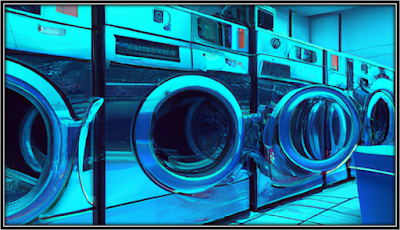If you want to start a laundromat business, some things you probably want to understand are the required initial investments and resulting profits you can make over time. Additionally, you may want to value the business at some point in the future in order to complete a correct DCF Analysis. This template makes all of that possible and I walk you through how to fill out all forecasting inputs in the video below.
After purchase, this template will be immediately available to download. Check out more forecasting financial models here, the service business models and The Super Smart Bundle. (For advanced version, scroll down)
Financial models are good if they are useful. It is important to be able to understand what you are doing when filling it out, otherwise all you've got is a really fancy calculator for nothing. Be thinking about your pricing strategy, seasonality, operational costs, and how those things may end up changing over time.
Test worst and best case scenarios to understand the bare minimum sales you need to break even. Figure out if you want to take on or need outside investment and how much of your business you want to give up for that. Determine if you want to pursue an initial SBA loan from a bank and see the resulting DSCR (debt service coverage ratio). There are all kinds of benefits this template offers.
General Template Features
- Model up to 10 years of activity
- Machine Purchase Schedule (5 washer types, 5 dryer types)
- For each 'type' define:
- Month of Machine Purchase
- # Purchased
- Cost per Unit
- Price / Use
- Max Hours Available/Month/Machine
- Average Time per Use (minutes)
- Useful Life (only for depreciation)
- Seasonality table (define % of maximum capacity attained for each month of the year and includes option to improve capacity each year for each month.
- Expense Schedule - fixed costs - define description, start month, monthly cost per year
- Variable costs - define average repairs/maintenance per machine per month, water, and electric per machine per month.
- Cap table to define equity structure / contributions / share of business
- Optional debt schedule, input interest rate / term / draw month
- Exit Option - driven by a defined multiple of trailing 12 month revenue from exit
- Stop the forecast at any month over the 10 years with a selectable end month
- Key metrics - average EBITDA per machine per year, IRR, ROI
- Financial Statements - Monthly and annual Income Statement, Balance Sheet, and Cash Flow Statement
- Executive Summary - Annual key financial line items all the way down to cash flow
- DCF Analysis - project, owner, and investor views with IRR and equity multiple
- Monthly / Annual detail - shows how all the assumptions come together on one timeline, revenue by machine type, variable costs, fixed costs, EBITDA, other cash flow items, cash flow, and cumulative cash flow.
- Lots of visualizations
- Option for Sale Leaseback
- Toggles for Buying Building or Renting
- Option for Bonus Depreciation for Equipment
- Three separate loan options: construction with a toggle for PIK), mortgage if buying building, and equipment loan. These are all separated out on the balance sheet.
- Added tax payment offset for estimated quarterly payments on the cash flow statement.
- Also, I forgot to show on the video, but this also has a Net Operating Loss (NOL) carryforward calculation for x% of future profits to be offset by past losses of prior years.
Advantages of Starting and Running a Laundromat Business
- Steady income: Laundromats have a steady flow of customers who need to do their laundry regularly. This can provide a reliable stream of income for the business owner.
- Low maintenance costs: Once the laundromat is up and running, the maintenance costs are relatively low. There are no ongoing inventory costs to worry about, and the machines typically have a long lifespan.
- Minimal staffing needs: A laundromat can be run with minimal staffing, especially if the machines are self-service. This means that the owner can save money on staffing costs.
- Multiple income streams: Many laundromats offer additional services, such as vending machines or drop-off laundry services, which can provide additional income streams.
- Flexibility: A laundromat can be operated on a flexible schedule, which can be ideal for those looking for a part-time or side business. The owner can set their own hours and work as much or as little as they want.
- Community involvement: A laundromat can become a hub for the local community, providing a space for people to socialize while they wait for their laundry. This can help to build a sense of community and increase customer loyalty.
Remember, buying 3 or more templates across the entire site at once gets you 30% off your entire purchase, just email which ones you want: jason@smarthelping.com
You may also like this small business valuation template.
